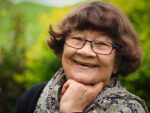For as far back as I can remember, I have been preoccupied with what it will be like to die.
As a girl, I would often zone out on my bed, or at my desk in school, imagining that I was on the verge of death, and trying on a range of possible reactions: terror, confusion, grief.
What I really hoped for in those moments of morbid fantasy was a kind of peaceful, alert confidence.
I would be brave and mature enough when I died. I would let go and master whatever might be waiting on the other side. But, mostly, all I could authentically muster was a shiver of panic.
As I moved into adulthood, I began to collect glimpses into the deaths of family members and friends.
There were hints at how to be at peace, but some of these deaths were sad and torturous.
An elderly friend with pneumonia who expired tethered to ICU machines against her wishes, another who succumbed to cancer, leaving two young daughters behind, and another who died of AIDS, shunned by his family, delirious and heartbroken.
Living in a society that offers few lessons on how life should end, and where the moribund are mostly hidden from view, it’s hard to find tangible examples of dying well.
A few years ago, I signed up to volunteer with a New York City hospice.
I was inspired by a dying friend who described how lonely she was being terminally ill in a death-phobic culture.
Maybe I could be of comfort to someone like her.
But also, I simply wanted to be near dying people – to get an education in death, to glean some coordinates for the roadmap to my own end. Continue reading
Sources
- Aeon
- Image: The Telegraph UK
News category: Features.




